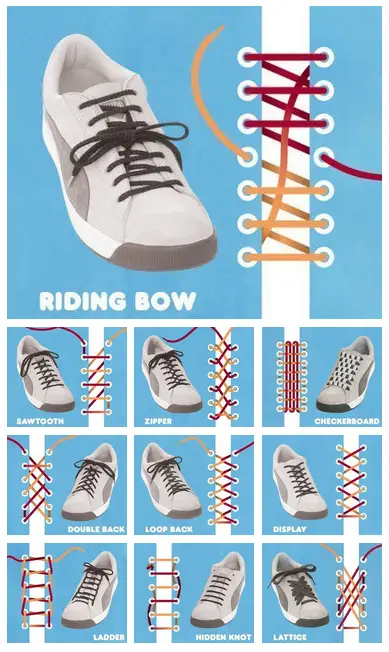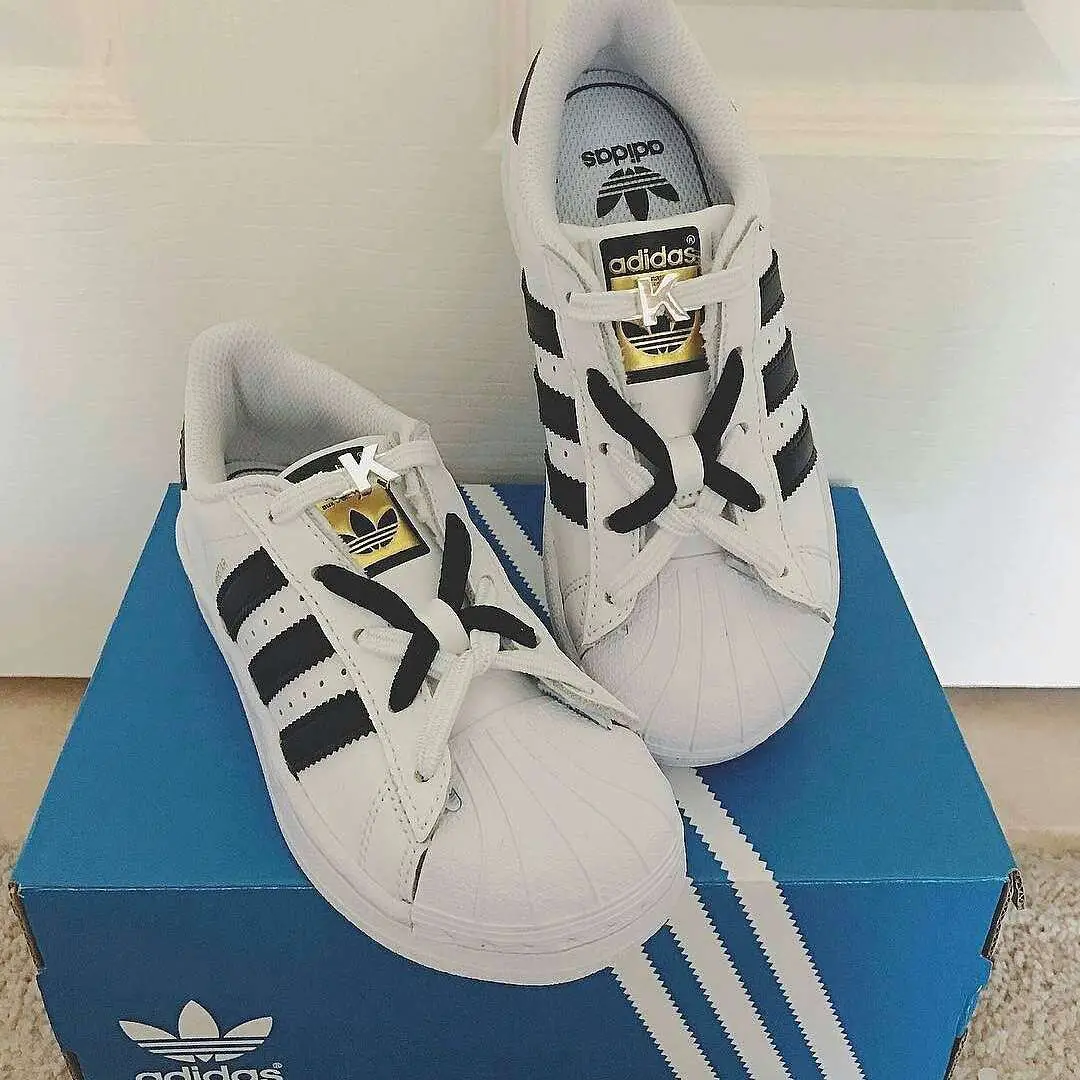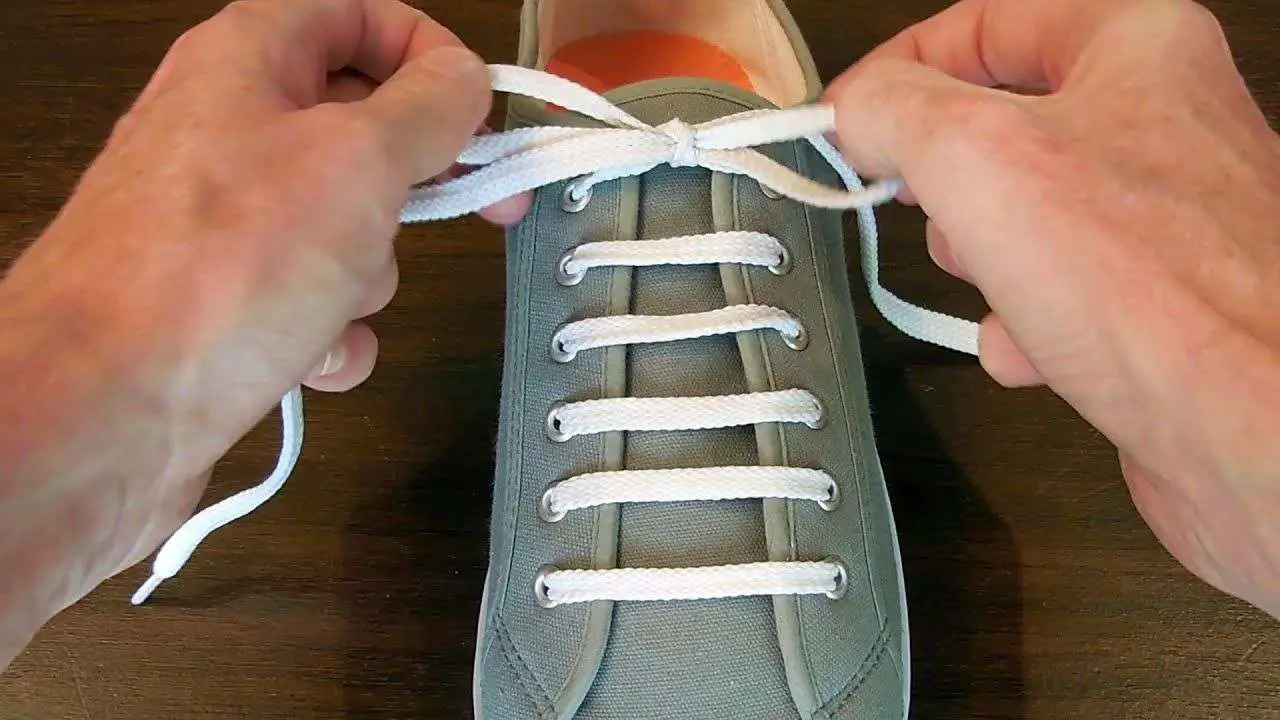Wide Feet In General Lacing Technique
On the other hand, if your feet are wide in general, the lacing below can solve your inconveniences.
Wide forefoot is not an uncommon problem and some brands offer wider shoes models. If this kind of lacing doesnt help you, probably you could try some of these shoes for wide feet like New Balance Fresh Foam 1080 v9.
Having narrow feet, on the contrary, means that even if you get the length properly, there is a possibility that a running shoe will feel roomy at the heel, forefoot, or it may even be a combination of the two. Though women encounter this issue more often, anybody can find too much volume in his or her shoe.
Sports / Military Advice
Like other straight lacing methods, Straight Bar Lacing has an additional benefit for sporting or military use: Theupper horizontal sections of shoelace can be quickly cut through with a knife or scissors in order to more easily remove aboot from a broken, sprained or otherwise injured ankle or foot.
Note that most military forces have regulations for just about everything, so I’d recommend that military personnel checkbefore they adopt this or any other possible non-regulation lacing method!
Top 12 Shoe Lacing Techniques
We spent 284 hours researching and testing lacing techniques for running shoes. Here, youll find our best recommendations. Enjoy.
This guide works for running shoes, hiking boots& hiking shoes, training shoes, sneakers, basketball shoes, and any other athletic footwear as well as everyday wear. It’s written specifically for running though.
In running, there are a lot of factors that could secure the fit and comfort of the feet. Even if your shoes feel great during your first try, there could be times that the upper construction will rub on your foot the wrong way. Each pair of feet is unique, which is why using the right lacing technique and proper knots will matter in your running performance. In this article, you will learn to relieve the foot fatigue or nagging pain by adjusting the laces right.
Runners lacing techniques are basic to master. They can help you or fail you depending on
- the lacing material
- the number of holes
- the type of knot you use to secure the laces
Despite being a minor issue, getting the lacing perfectly will make a big difference in the overall comfort and support of your shoes. We have reviewed some scientific studies to present the results of these investigations for the best lacing techniques and their influence on running experience.
Recommended Reading: Can You Customize Your Own Adidas Shoes
Toe Pains Lacing Technique
Painful cramping can be battled with shoes lacing adjusted for better toe splaying. With more space available in the forefoot there is lesser risk of toe pains and no numbness to deal with.
This technique is a great tool for battling black nails and forefoot discomfort. Try it out.
Any habitual runner will agree that at some point his feet were still feeling sore after the previous run when he or she was about to hit the road as usual. Foot fatigue is a natural issue, and everyone becomes its victim sooner or later.
Where To Buy Extra Laces

Swapping in different color laces is another great way to add an original look to your sneakers. Shoes sometimes come with extra laces, but more often, they don’t. All three sneakers I used in this review didn’t come with extra laces.
Whether you’re looking for a different color that didn’t come included or you’re replacing a beat-up pair, .
You’ll find a variety of lace styles, colors, and lengths, but one of the best deals is this 10-count variety pack for $19.99 from Etsy.
Typically, 40-inch and 45-inch laces are good for low-tops, while 54-inch laces are good for high-tops and boots. If you’re unsure of which length you need, measuring the laces you currently have in your shoes is a fail-safe way to get the right length.
Read Also: Croc Alternatives
Lacing Ultra Boosts With The Uncaged Style
Narrow Feet Lacing Technique
This lacing technique can aid you in perfecting the grip for a narrow foot.
Although having narrow feet is a less popular discomfort, some brands do provide narrow running shoes.
Bear in mind that you need more room when it comes to running. Having a compact shoe is a must however, if you cannot flex normally or the shoe hinders you from proper toe splaying, this could affect your performance.
Make sure to ease the pressure of the lacing. Lacing that is too tight may seem to keep your feet from slipping however, this could hinder the normal blood flow, leading to numbness and bruising in the end.
Learn to flex your foot inside your shoe before hitting the course and see to it if you are comfortable enough with the interior. If not, adjust the lacing system to fit your needs.
Don’t Miss: Best New Balance Shoes For Orthotics
Freestyle Fame On A Shoestring
*NOTE Make sure âthe shoe fitsâ before modifying. Shoes cannot be returned after modifications occur.
Ever try playing baseball without a mitt? What about basketball without a hoop? In each of these sports, the game revolves around a primary object, that is, the baseball or the basketball. However, secondary equipment , for which there is no practical substitute, is essential to the optimal playing of each game. Wearing a gardening glove on your left hand may help you field a line drive, but its no substitute for a baseball mitt. A dart board would give you something at which to shoot a basketball, but hey, you cant rip twine on a dart board.
figure 1
The Straight Pattern: This Can Be Tricky So Pay Attention
The straight pattern can be a little bit tricky since much of the lacework is hidden underneath the eyelet panels. First, follow the blue arrows in the picture above, which indicate the hidden lacing. Then follow the yellow arrows, which indicate lacing across the tongue.
Note: The shoes pictured above are the Nothing New low tops. They are sustainably made from 100% recycled plastic. Read my full review to learn more about the brand.
Don’t Miss: Do Tieks Stretch
Narrow Heel + Wide Forefoot Lacing Technique
There are runners comfortable with more room and breathability in the interior of the shoe when it comes to running. For their demands, there is an answer: a special lacing technique, that allows changing the tightness of the grip during the run.
You can adjust it by pulling or loosening the laces to adapt the shoe to your feel.
Some shoes have lace pockets to keep your laces out of the way. This will minimize the distraction and lessen the chances of stepping on them. If your shoes do not have lace pockets, make sure to tuck them in before you start your course.
At What Age Do Kids Start To Tie Their Shoes
Kids may start to tie their shoes at different ages. It is just the same as children starting to crawl, walk, talk, or feed themselves. They are all different.
Some of my friends have children, and some of them work with children. The age range that kids start to tie their own shoes is between 4 and 6 years of age. But, it is always important to remember that some children will start sooner or later than others, and that is ok.
Practice makes perfect, and at this age, your little one is fine-tuning their fine motor skills to do many things that we have perfected over many years.
My nephew is 5 years old and does not know how to tie his shoes yet because most of his shoes are slip-ons. While my Goddaughter learned to tie her shoes at 4 years old, and my niece learned to tie her shoes at 3 years old.
And according to their parents, there was still some room for improvement. But, they mastered the task, right!
Read Also: How To Do Raffle For Shoes
High Arches Lacing Technique
Many people may not know it, but there are lacing techniques that work better with specific arch types. Under pronators or supinators commonly have high arches, which means they are vulnerable to the outward foot roll motion while running.
This lacing technique above will help the shoe provide decent support to prevent supination from getting in the way of comfort. Many brands make shoes for high arches, like the Adidas Ultraboost 19 which can drastically help when combined with the proper lacing technique.
When Were Shoelaces Invented

Although shoelaces have clearly been used in one form or another for thousands of years, they were not formally invented until 1970, when Englishman Harvey Kennedy took out a patent. Although shoelaces were not a novel idea, he introduced the aglet. The aglet is the metal or plastic cap on the ends of a shoelace that protect it from fraying and make it easier to thread the shoelaces. This feature revolutionized shoelaces and brought them closer to what we use today.
Ship To
Recommended Reading: Are My Running Shoes Too Small
Odd Eyelet Pairs Limitation
Straight Bar Lacing only works neatly on shoes with even numbers of eyelet pairs . This is because the shoelace must cross the shoe an even number of times so that the ends meet in themiddle and can be tied together.
On shoes with an odd number of eyelet pairs , a workaround is needed so that theends still meet. The across and back workaround is probably the best compromise in terms of retaining theoverall look plus allowing a regular knot.
See below for several other odd workarounds.
The 6 Best Ways To Lace Your Running Shoes
All feet are unique, so were bringing you six of the best ways to tie your laces no matter what kind of runner you may be.
From an early age, were all taught the fundamental lesson of how to tie a shoelace. And, although its extremely important that we as runners keep our shoelaces from becoming a hazardous hospital trip, were not often taught that there are different techniques for tying laces depending on your running style.
Also Check: Hey Dude Cleaning
Lacing Techniques For Better Performance
Competition running shoes are not the only answer to better performance, having a comfortable shoe interior is key to a successful run. Once running starts, the runner would have to set his mind on finishing the course, unless his willpower is threatened by a detail or two:
- toe pains
- ankle discomfort, etc.
How To Tie Soccer Shoes
Traditional options for lacing soccer shoes include Standard Lacing , Top Lock Loop Lacing to secure the ankle and heel, or Forward Foot Lock Lacing to give you a tighter feel in the front of the foot. A lot of thought and energy go into selecting the right soccer cleats, but how you lace them up is also important for getting the right feel on the pitch. Theres no one correct way, so players should give all three a shot and see what feels right for them.
Lets examine your options in greater depth.
Read Also: Red Red Bottom Shoes
Going With An Untied Look
Straight Across Lacing And Tying
Choose your preferred color and style of shoelaces. Look at your shoe, and mentally number the shoelace eyelets, starting at the toe of the shoe and running up to the top of the shoe.
Begin lacing the shoe with the eyelets closest to your toes. Center the shoelace at the toe. Run the shoelace over the first eyelets, so that both ends come up under the vamp of the shoe, next to the tongue.
Take the right shoelace in your hand and lace it under the second right eyelet. Then lace it down through the top of the second left eyelet.
Take the left shoelace in your hand and lace it under the third left eyelet. Pull it through and lace it down through the top of the third right eyelet.
Go back to the shoelace now coming out of the second left eyelet. Run it vertically up the inside of the shoe next to the tongue, and pull it out through the fourth left eyelet. Pull it through and across, and lace it down through the fourth right eyelet.
Go back to the shoelace at the third right eyelet. Run it vertically up the inside of the shoe next to the tongue, and pull it out the fifth right eyelet. Pull it through and across, and lace it downward through the sixth left eyelet.
Recommended Reading: Is Dhgate Legit For Shoes
How To Tie Athletic Shoes
It seems as if all the cutting-edge hoops shoes feature Velcro closures and such, but the real fashion today is antique sneaks. Some people think athletic shoes are best laced straight across, because all you have to do to tighten them is tug on the horizontal bar formed between each set of eyelets: Start at the bottom and work your way up. I have noticed that in the hipster sneaker shopsI happen to live in a neighborhood filled with stores that sell sneakers as high as 400 to 500 bucksthey lace the shoes crisscross, so that must be whats hip in old-school shoes. Unless, I suppose, youre a Run-DMC fan, in which case who needs laces?
There’s A Physics Trick To Keep Your Shoes From Coming Untied

A combination of the whipping motion of a shoelace when you step forward and the impact of your foot… on the ground will work to loosen your shoelaces as you walk or run.
Oliver M. O’Reilly, UC Berkeley
In order to tie your shoes, there’s a simple knot that almost all of us learn how to make when we’re small children: a “criss-cross and tuck” part, followed by a “loop-and-pull” part. That simple knot has three strong advantages to it over most other types:
The result of a conventional shoe-tying method, where two opposing laces come together to create an… easily-undone knot with two loops on either side.
AnonMoos of Wikimedia Commons
Of course, many of us have experiences where it takes only a few minutes of moderate walking to undo our efforts of tying our shoes. This is true, and scientists have recently made a lot of progress towards understanding why.
The reasons? One has to do with the physics that goes into the forces that walking provides, but the other is a detail you’ve probably never noticed before.
A properly tied shoe will result in a reef knot, where the laces sit squarely atop your shoes.
public domain / max pixelHans of PixabayFabmania of Wikimedia Commons
Recommended Reading: How To Get Shoe Raffles